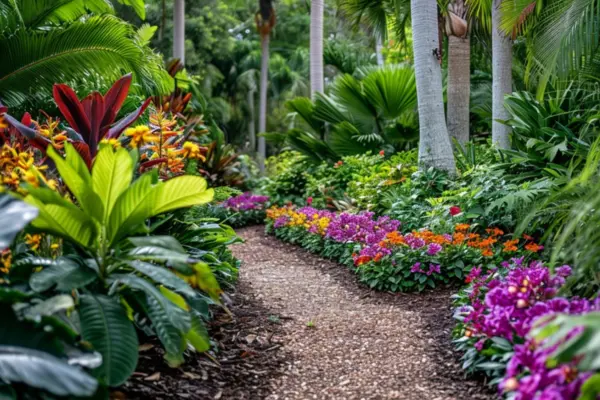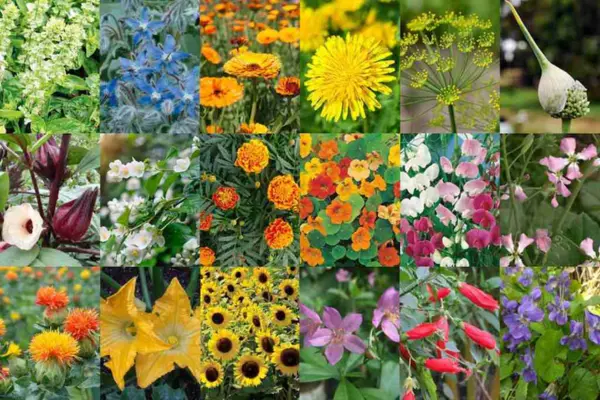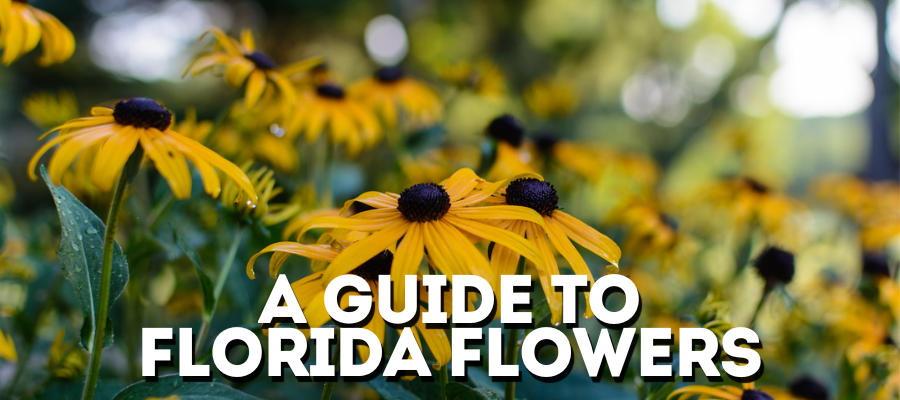Florida is often celebrated for its stunning landscapes and vibrant culture, but one of its most enchanting features is its diverse array of flowers.
Florida flowers flourish in the state’s unique subtropical climate, making it a paradise for flower lovers and gardeners alike.
With over 3,000 native plant species, the Sunshine State boasts a rich tapestry of colors and scents that delight the senses.
Why Florida is a Flower Lover’s Paradise

The state’s warm temperatures and ample sunshine create ideal conditions for various flowers to thrive. From the sandy shores of the Atlantic coast to the lush wetlands of the Everglades, Florida’s ecosystems provide the perfect backdrop for a remarkable range of blooms.
Notable Climate Features
Subtropical Climate: Most of Florida experiences a humid subtropical climate, ideal for a wide variety of plants.
Diverse Ecosystems: From beaches to wetlands, Florida’s diverse habitats support numerous flower species.
Year-Round Blooming Season: Unlike many northern states, Florida’s flowers can bloom at various times throughout the year.
In fact, Florida ranks third in the U.S. for its variety of native plants, with around 1,000 species of flowering plants. Here’s a breakdown of some common native and exotic flowers:
| Flower Name | Type | Blooming Season | Key Features |
|---|---|---|---|
| Coreopsis | Native | Spring/Summer | Bright yellow petals, attracts pollinators |
| Orange Blossom | Native | Spring | Sweet fragrance, state flower of Florida |
| Hibiscus | Exotic | Summer | Large, vibrant blooms in various colors |
| Bougainvillea | Exotic | Year-round | Hardy, colorful bracts |
This introductory section sets the stage for a deeper dive into the vibrant world of Florida flowers. Let’s explore the most popular native and exotic flowers, seasonal blooms, gardening tips, and much more.
Popular Florida Flowers

Native Florida Flowers
Florida is home to numerous native flowers, which not only enhance the state’s beauty but also support local wildlife. Here are some standout examples:
Coreopsis (Coreopsis spp.)
Often referred to as the “tickseed,” Coreopsis is Florida’s official state wildflower. Its bright yellow blooms can be seen from late spring through early summer and attract butterflies.
Orange Blossom (Citrus sinensis)
The delicate white flowers of the Orange Blossom are famous for their sweet fragrance. Blooming in spring, these flowers are not only beautiful but also vital for fruit production in orange trees.
Firebush (Hamelia patens)
This shrub showcases clusters of tubular orange-red flowers that bloom year-round. Firebush is particularly attractive to hummingbirds and butterflies, making it an excellent choice for wildlife gardens.
Exotic and Non-Native Flowers
Florida’s subtropical climate allows for the cultivation of many exotic and non-native flowers:
Hibiscus (Hibiscus rosa-sinensis)
Known for its large, colorful blooms, Hibiscus thrives in Florida’s heat. It comes in various colors, making it popular for landscaping.
Bougainvillea (Bougainvillea spp.)
Featuring vibrant bracts that can be purple, pink, red, or orange, Bougainvillea is hardy and requires little water once established.
Seasonal Blooming Flowers in Florida
Florida’s climate allows for a diverse range of flowers to bloom throughout the year. Understanding when to expect these flowers can enhance your gardening experience and outdoor adventures.
Spring Blossoms
Spring is a magical time in Florida when many flowers burst into bloom. Notable spring flowers include:
Azaleas: Colorful shrubs that thrive in shaded areas and produce vibrant blooms in pink, red, and white.
Dogwoods (Cornus florida): With their striking white flowers, Dogwoods add a touch of elegance to the landscape.
Summer Blooms
As temperatures rise in summer, several flowers reach their peak:
Sunflowers (Helianthus annuus): Cheerful yellow blooms that thrive in full sun.
Plumeria: This fragrant flower reaches its peak bloom during the summer, providing a tropical feel.
Fall Foliage
In fall, the transition of seasons brings new flowers to life:
Goldenrod (Solidago spp.): Bright yellow flowers that bloom in late summer to fall and are essential for pollinators.
Marigold (Tagetes spp.): Hardy annuals that continue to bloom until frost, known for their vibrant colors.
Winter Flowers
Even in winter, Florida’s mild climate allows for blooming flowers:
Pansies (Viola tricolor var. hortensis): Cool-season annuals that provide colorful blooms during the cooler months.
Snapdragons (Antirrhinum majus): Colorful spikes that thrive in cooler temperatures.
Growing Florida Flowers in Your Garden
If you’re inspired to create your own floral oasis, growing Florida flowers can be a rewarding experience. Here’s what you need to know to get started.
Ideal Growing Conditions
Understanding the growing conditions required for Florida flowers is crucial:
Soil: Most Florida flowers thrive in well-drained soil. Incorporating organic matter can improve fertility.
Sunlight: Most prefer full sun, needing at least six hours of direct sunlight daily.
Watering: Regular watering is essential, especially during dry spells.
Best Practices for Planting
Here are some steps to help you successfully plant your Florida flowers:
Choose the Right Plants: Select flowers suited to your local climate and soil type.
Timing: The best time to plant most flowers is in spring or fall.
Spacing: Ensure proper spacing to allow for growth and air circulation.
Mulching: Apply mulch around your plants to retain moisture and suppress weeds.
Pest and Disease Management
Florida’s warm climate can attract various pests and diseases:
Common Pests: Aphids and spider mites can be nuisances. Regularly inspect plants and use insecticidal soap if necessary.
Diseases: Fungal diseases can thrive in humid conditions. Ensure good air circulation and avoid overhead watering.
Where to Find Florida Flowers
Exploring the beauty of Florida flowers can be a rewarding adventure:
Botanical Gardens and Parks
Fairchild Tropical Botanic Garden (Coral Gables): Features a vast array of tropical plants and seasonal flower shows.
Naples Botanical Garden: Focuses on Florida’s native plants with themed areas.
Natural Habitats and Wildflower Trails
The Big Cypress National Preserve: Home to native flowers, especially in spring.
The Florida Wildflower Corridor: Showcases native wildflowers along roadsides and trails.
Conclusion
Florida’s floral landscape is a testament to the state’s natural beauty and ecological diversity. From the fragrant Orange Blossom to the vibrant Hibiscus, Florida flowers captivate anyone who takes the time to explore them. Whether you’re an avid gardener or simply someone who appreciates beauty, Florida’s flowers have something to offer everyone.
As you venture into the world of Florida flowers, consider cultivating your own garden or visiting local parks. Embrace the opportunity to appreciate the delicate balance of nature and the rich cultural significance these flowers hold. Happy blooming!

